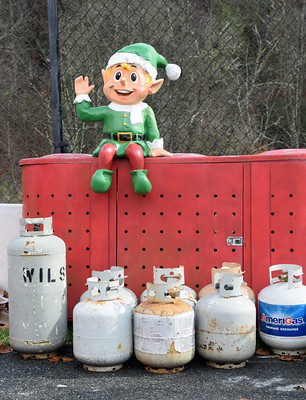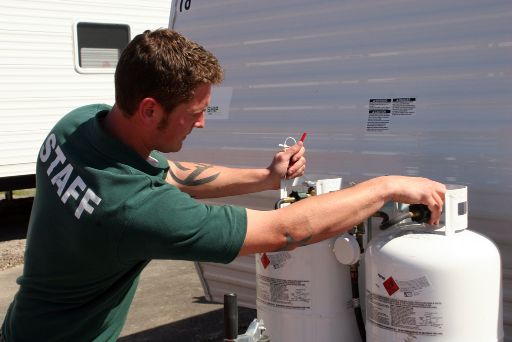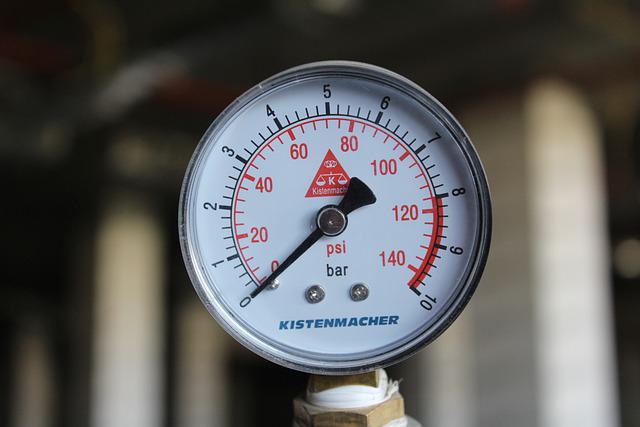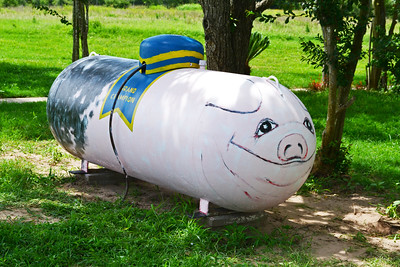
When it comes to heating and cooking, propane tanks are hard to beat. But, with so many options on the market, how do you choose the best propane tank for your needs? Well, you’re in luck because this article is your one-stop guide.
Whether you’re a homeowner who needs propane for your grill and heating system, or a business owner seeking a trustworthy energy solution, knowing how to choose your tank can make a world of difference in terms of efficiency, safety, and your pocketbook.
We’ll be taking you on a deep dive into this topic, guiding you on how to figure out your needs, how to pick the perfect size, and even factors to consider that go beyond just the size.
If “Which propane tank should I get?” is a question that’s been bouncing around in your mind, you’ve come to the right place. So, stick around and let’s figure out together the right cylinder for your needs.
Understanding Propane Tanks
The Basics
Its Components
A tank is more than just a storage unit for fuel; it’s a complex system designed for safety and efficiency. Main components include the shell (the outer part you can see), a valve for regulating gas flow, a pressure relief device for safety, and a liquid level gauge to monitor fuel levels. Some cylinders also have a float gauge to provide a more accurate reading of the propane level.
Common tank sizes and their uses
They come in various sizes, each with its unique uses. Smaller ones (20-pound capacity) are often used for barbecues and portable heaters, while larger ones (500 to 1000 gallons) are used for heating homes or powering commercial applications. It’s crucial to match the size to your usage for optimal cost and efficiency.
Lifespan and maintenance requirements of a propane tank
With proper care, they can last a long time – typically 12 to 15 years for portable ones and up to 30 years for larger, stationary tanks. Regular maintenance, including checking for leaks and rust, maintaining the valve and gauges, and professional inspections, can help maximize its lifespan.
Types of Propane Tanks
Comparison of different types, such as residential, commercial, and portable tanks
The type of tank you need largely depends on your usage. Residential types are used for home heating, cooking, or powering appliances and typically range from 120 to 1000 gallons. Commercial types are larger (1000 gallons and up) and used for businesses and industries that need a substantial amount of propane. Portable ones are smaller, transportable cylinders often used for grilling, camping, or temporary heating needs.
The advantages and disadvantages of each type
Residential tanks are versatile and can be sized to fit most homes’ needs, but they require a permanent location. Commercial type can handle large-scale needs but may be overkill for smaller operations. Portable cylinders offer mobility but have limited capacity and require more frequent refilling. It’s essential to weigh the pros and cons of each type to find the best fit for your situation.
Read also: How to Choose a Propane Delivery Service?
Figuring Out Your Propane Needs
A. Evaluating Your Personal or Business Usage
How much energy do your appliances consume?
Every appliance running on propane comes with a rating, typically measured in BTUs per hour. This information, which you can typically find in your appliance’s manual or its ID plate, tells you how much propane it guzzles when it’s working its hardest. Understanding these numbers can help you better understand your overall gas consumption.
How often do you use propane?
The frequency of your propane usage plays a critical role in determining how much propane you’ll need. Whether you’re a weekend grill master or only bring out the Barbie a few times a year makes a significant difference. If you heat your house with propane, do you use it all winter, or do you swap it out with other sources occasionally? Knowing how often you use your appliances will help guide you toward the right size.
Calculating your yearly propane needs
With a grasp of how much propane each of your appliances consumes and how frequently you use them, you can estimate your annual fuel needs. This estimation will give you an idea of what size you should go for and how often you’d need to refill it.
B. The Impact of Location and Weather
How climate affects your usage
Climate has a considerable influence on your needs. If you live somewhere with a colder climate, you’re likely to use more propane, especially during the winter months. Keep this in mind when you’re deciding on your propane requirements.
Where to place your tank and local rules
Where you place your tank can affect both how well it works and how easy it is to refill. You should place your tank somewhere ventilated and easily accessible but shielded from harsh weather. Also, keep in mind any local regulations about placement – these can vary, so it’s good to be in the know.
C. Looking Ahead at Your Future Needs
Predicting changes in your usage
As you plan for your propane needs, don’t forget to think ahead. Are you considering getting more appliances, or perhaps decreasing your use? Having a sense of these future changes can guide your choice of tank.
Propane’s place in the shift toward renewable energy and sustainability
With the world making strides towards renewable energy and sustainability, propane is holding its own, thanks to its efficiency and relatively low emissions compared to other fossil fuels. Staying updated on these trends can help you make decisions about your usage that are both environmentally friendly and cost-effective.
Read also: How to Choose the Correct Propane Forklift Tank?
Choosing the Right Propane Tank Size
A. Aligning the Size with Your Usage
How different usage needs require different sizes
It’s essential to pick a size that matches your needs. Let’s say you only use propane for your BBQ grill, a small 20-pound capacity would probably do the trick. But if you’re running your home’s heating system on propane, you’re going to need a much bigger storage, generally in the 500 to 1000-gallon range. The key here is understanding what your specific needs are and choosing a size that can meet those needs without overdoing it.
The role tank size plays in efficiency and cost
Picking the right size for your tank is not just about having enough fuel. It also has a significant impact on efficiency and cost. If you end up that’s too small, you’ll be constantly refilling it, which is both a hassle and can get pricey. But if your tank’s too big, you’re looking at a high upfront cost and wasted space.
B. Pitfalls to Avoid When Picking a Tank Size
One thing to watch out for when you’re choosing your tank size is not to forget about the future. If you’re planning to get more propane-powered appliances down the line, you’ll need to account for that when you’re deciding on size. Another common pitfall is not considering how much space you have available for your tank. Big ones need more space, and there might be specific rules about where they can be placed.
C. Special Situations to Consider
When you need propane on the go
If you need a solution for temporary or mobile situations, like camping or RVing, a smaller, portable cylinder could be your best bet. These are easy to move around and refill, which makes them great for when you’re on the move.
Having a backup for emergencies
If you live somewhere where power outages or bad weather are common, it might be worth considering a backup tank. Having a spare tank ensures that you’ve got a reliable power source even when things go south.
For high-demand situations
For situations where you need a lot of propane, like in commercial cooking or heating large buildings, you’ll probably need a larger one to make sure you don’t run out when you need it the most. In some situations, it might even be more efficient to have several smaller tanks instead of one big one. To find out what the best setup for your needs is, it’s always a good idea to consult with a professional.
Considerations Beyond Size
A. Check for Quality and Safety Features
Keeping an eye out for safety certifications and requirements
Safety comes first when you’re dealing with propane tanks. Always opt for the type that’s in line with or goes beyond national safety standards. You should be able to find this information in the product details or directly on the tank. Make sure the cylinder has a stamp of approval from a trusted testing body.
How the materials and design affect its lifespan and safety
The materials that make up your tank and how it’s designed are super important when it comes to how long the tank will last and how safe it is. They are made from good quality steel and designed with safety features like pressure relief valves are typically longer-lasting and safer.
B. Look Into Brand Reputation and Customer Reviews
It’s a good idea to research the reputation of the brand and read reviews from customers before you make a decision. Brands that are well-regarded and have good reviews are often a safer bet when it comes to quality and customer service.
C. The Rent or Buy Dilemma
Depending on how long you plan to use your tank, you might want to think about whether it’s better to rent or buy. Renting is usually cheaper upfront and comes with maintenance included, but you’ll have ongoing rental costs. Buying a tank often works out cheaper in the long run, but it means you’re in charge of maintenance and any repairs that might come up.
D. The Crucial Role of Professional Installation and Maintenance
Getting your tank installed correctly and keeping up with maintenance is key to its performance and lifespan. While it might be tempting to do it yourself, getting a professional to install it makes sure it’s done right and safely. Regular professional check-ups can catch potential issues before they become big problems, ensuring your tank is safe and efficient.
To Make a Conclusion
Choosing the right propane tank involves much more than just selecting a size. It’s a process that should involve careful evaluation of your gas usage, consideration of your location and future needs, as well as in-depth research into quality, safety, and brand reputation.
Whether you decide to rent or buy, remember the importance of professional installation and regular maintenance. By taking these factors into account, you’re bound to select the one that is not only perfect for your needs but also safe, efficient, and long-lasting.
Remember, your choice today impacts your comfort, budget, and peace of mind tomorrow. So, take the time to make an informed decision, and enjoy the benefits of a well-suited type. Keep in mind, making the right energy choices helps us all move towards a more sustainable future.

Mike is an experienced propane technician with over 15 years of professional experience in the field. He has dedicated his career to helping customers with their propane needs, from installation to maintenance and repair. Together with Jeremy, he co-founded this website to provide useful information and guidance to customers seeking reliable propane services.



